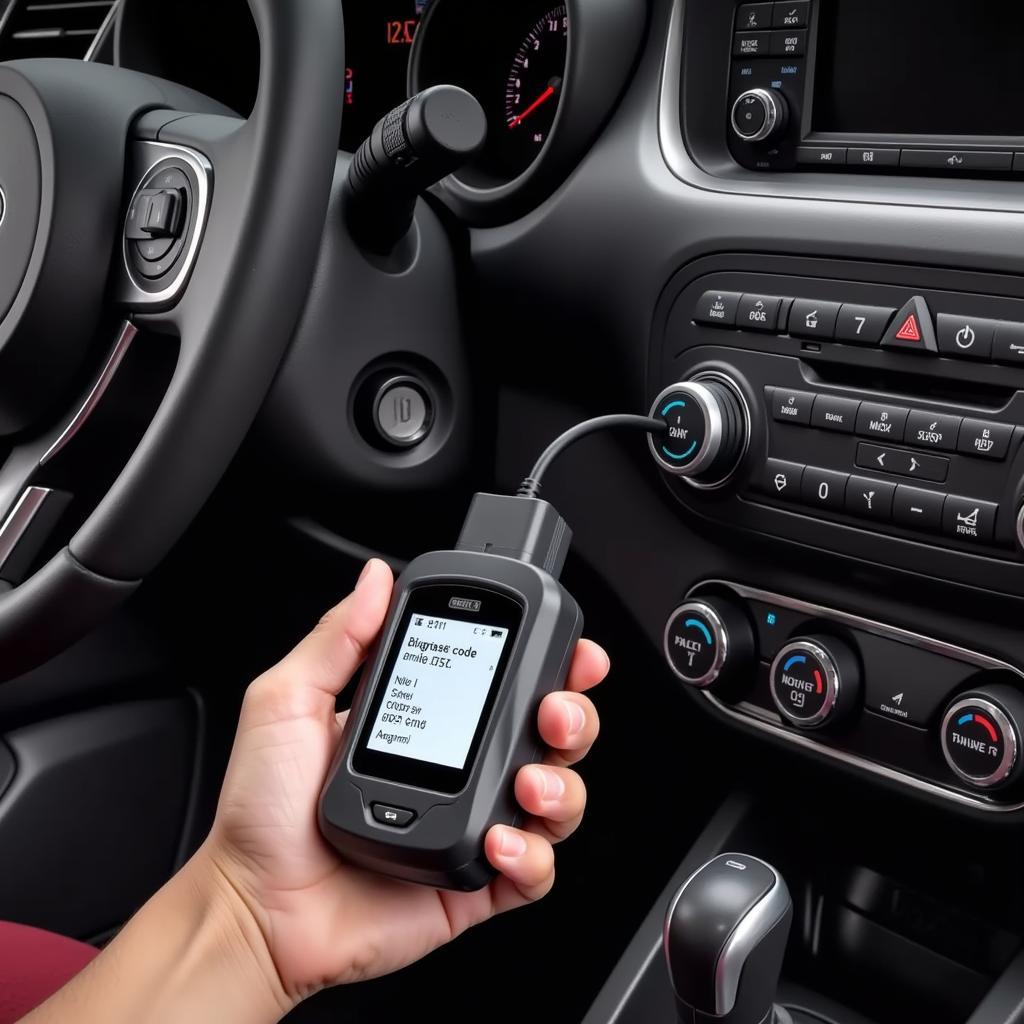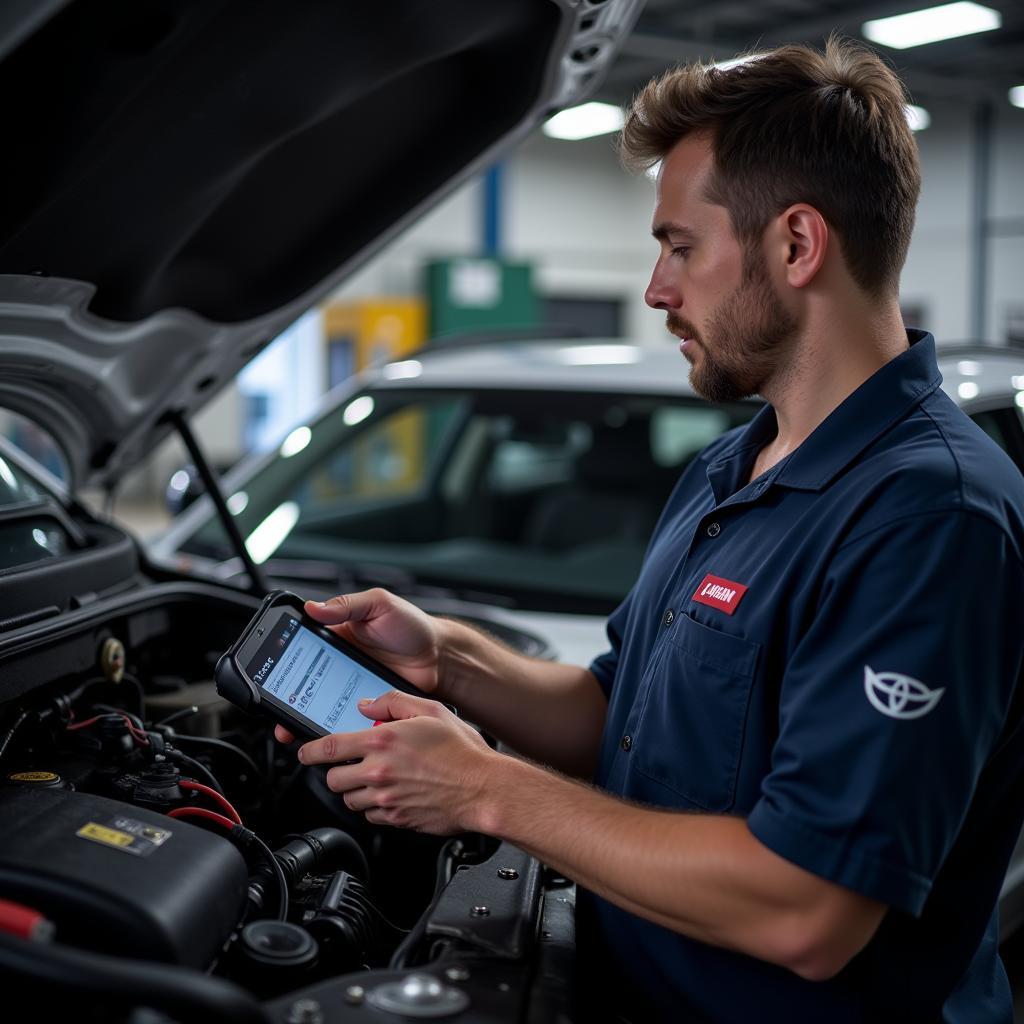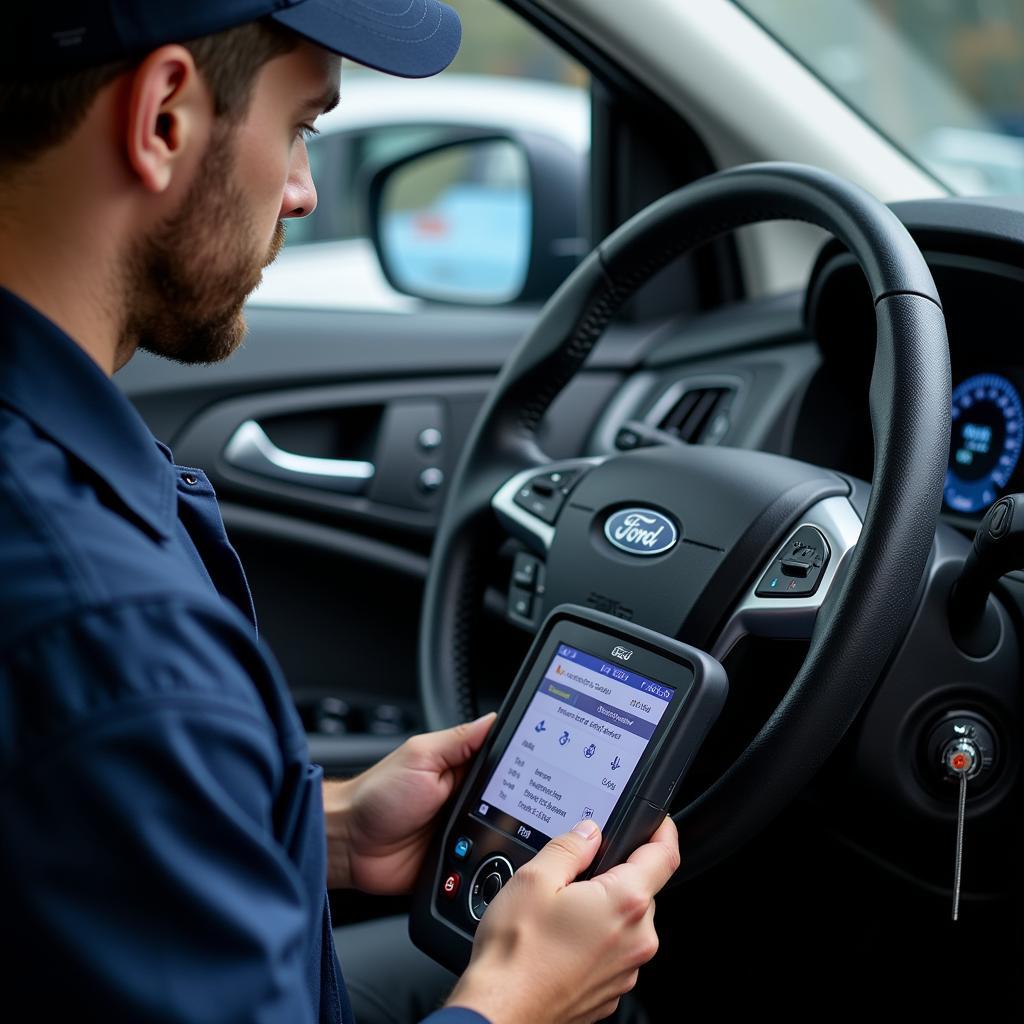Imagine this: you’re cruising down the Pacific Coast Highway in your classic 1995 Ford Mustang, the California sun warming your face. Suddenly, the “Check Engine” light flickers on, casting a shadow over your idyllic drive. What do you do? Enter the OBD scan tool, a device as crucial to modern car maintenance as a wrench and screwdriver once were. But with terms like “OBD I” and “OBD II” floating around, it can be confusing to know what you’re dealing with.
This guide will demystify OBD scan tools, exploring their evolution, functionality, and why they’re essential for any car owner, whether you’re a seasoned mechanic or a weekend DIY warrior.
Understanding the Basics: OBD I vs. OBD II
Before diving into the tools themselves, let’s differentiate between the two main On-Board Diagnostics (OBD) systems.
OBD I: The Early Days (Pre-1996)
Introduced in the late 1980s, OBD I was a rudimentary system primarily focused on monitoring emissions-related components. Each car manufacturer had its own proprietary connector and communication protocol, making diagnosis a headache for mechanics.
Think of it like trying to order a pizza in a foreign country with no translator app – frustrating and inefficient.
This lack of standardization meant that mechanics often needed multiple adapters and extensive knowledge of various car models to interpret the limited data OBD I provided.
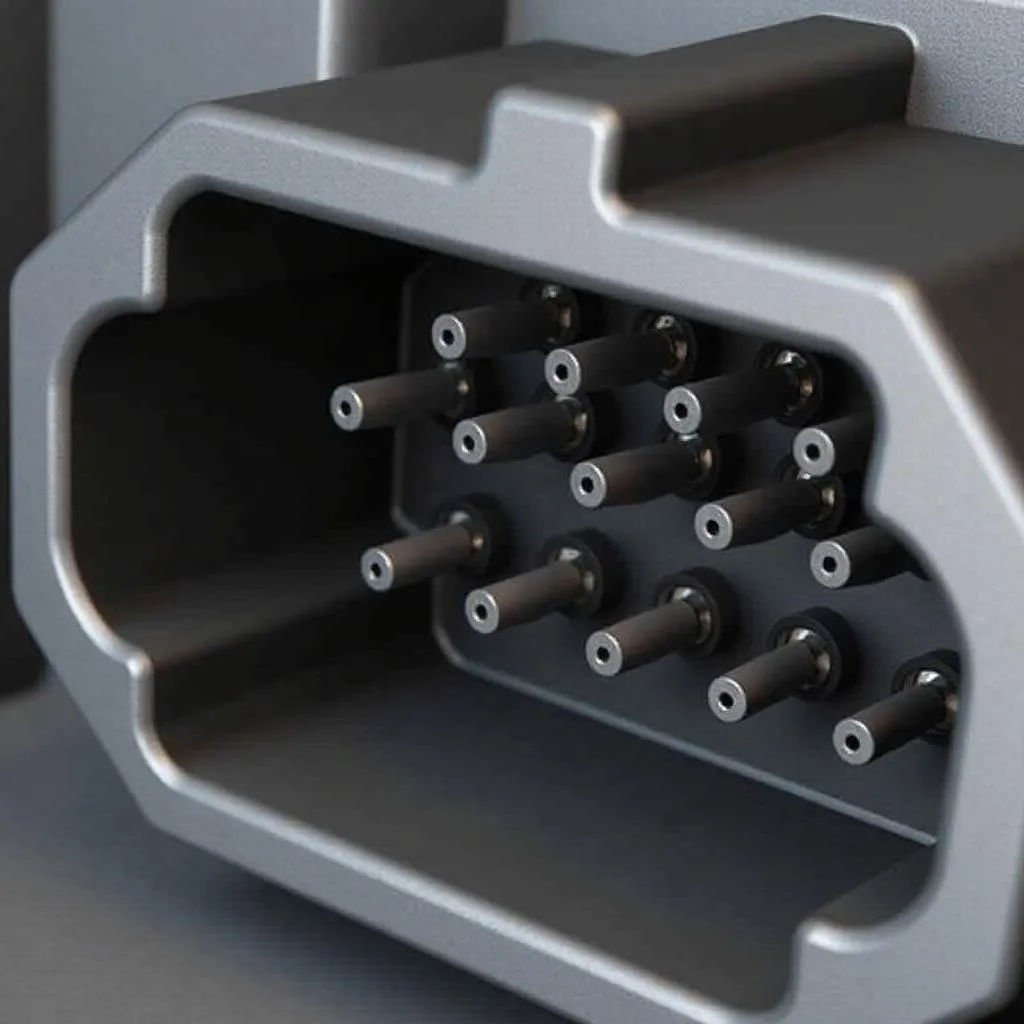 OBD 1 Connector
OBD 1 Connector
OBD II: The Standardized Revolution (1996-Present)
In 1996, the Environmental Protection Agency (EPA) mandated OBD II for all vehicles sold in the United States, ushering in a new era of standardized diagnostics. This system uses a universal 16-pin connector and a standardized communication protocol, making it significantly easier for mechanics and car owners to access and understand diagnostic information.
For our pizza analogy, it’s like everyone speaking the same language – simple and straightforward.
OBD II provides a wealth of data beyond just emissions, including engine performance, transmission function, and other critical systems. This information allows for more accurate diagnostics and faster repairs.
OBD Scan Tools: Your Key to Car Health
Now that we understand the basics of OBD, let’s explore the tools that unlock its potential.
Types of OBD II Scan Tools
From basic code readers to advanced professional-grade scanners, a wide array of OBD II scan tools cater to different needs and budgets.
1. Basic Code Readers
These affordable and easy-to-use devices read and display diagnostic trouble codes (DTCs), which are like your car’s version of error messages. They provide a starting point for diagnosing issues but offer limited functionality beyond code retrieval.
Think of them as the “check engine” light translator – they tell you there’s a problem but not necessarily what it is or how to fix it.
2. Advanced Scan Tools
For DIY enthusiasts and professional mechanics, advanced scan tools offer a deeper dive into your car’s systems. These tools provide live data streams, allowing you to monitor various parameters in real-time, graph sensor readings, and even perform bi-directional tests to activate components like actuators or solenoids.
These tools are like having an X-ray vision into your car’s inner workings, allowing you to diagnose and fix issues with greater precision.
3. Specialized Scan Tools (Dealer Level)
Certain diagnostic procedures require specialized tools designed for specific car makes or models. For example, a DRB scan tool is essential for in-depth diagnostics and programming on Chrysler, Dodge, and Jeep vehicles.
You can find resources online, including marketplaces like eBay, to purchase or learn more about specific scan tools, like the DRB scan tool.
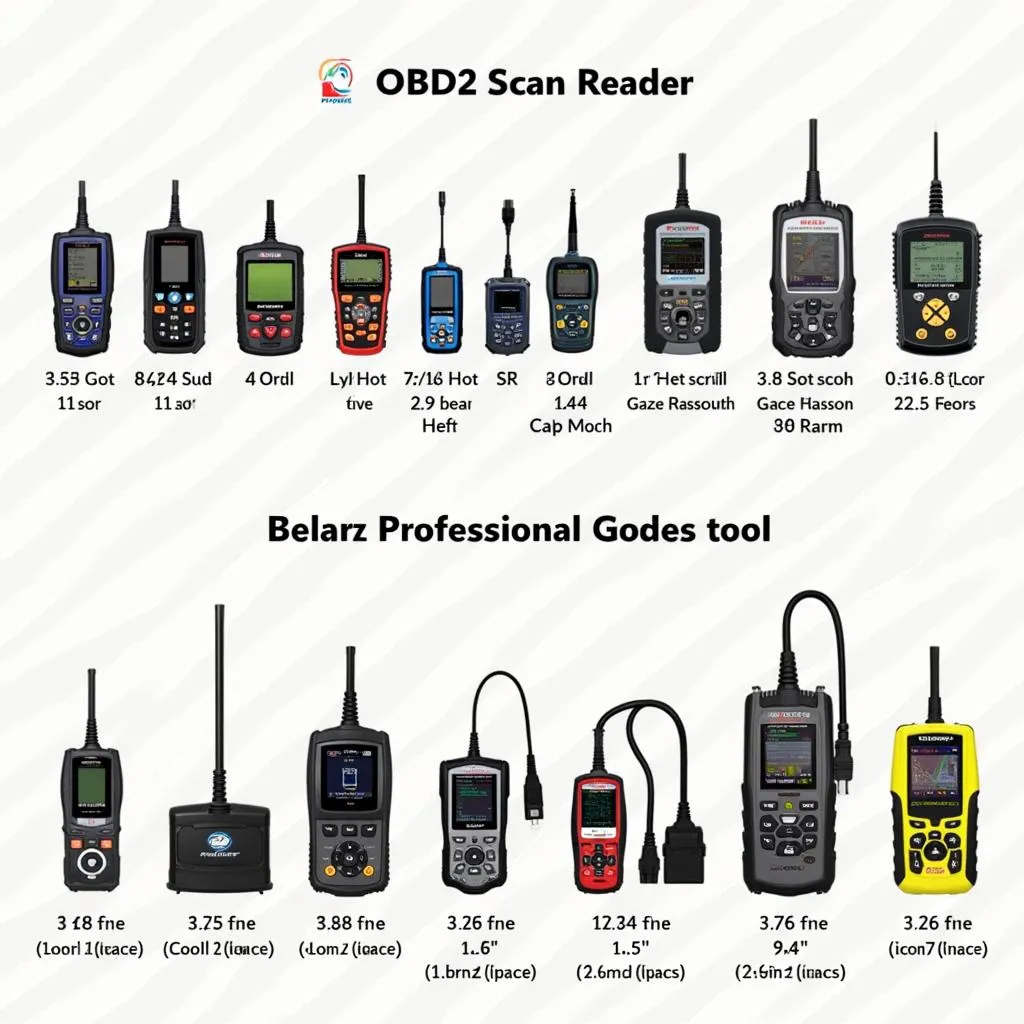 Different types of OBD2 Scan Tools
Different types of OBD2 Scan Tools
Choosing the Right Scan Tool
Selecting the right OBD scan tool depends on your budget, technical expertise, and the tasks you want to perform.
If you’re comfortable with basic troubleshooting and primarily need to read and clear DTCs, a basic code reader might suffice. However, if you’re a DIY enthusiast or a professional mechanic, investing in an advanced scan tool can save you time and money in the long run.
Remember, the right scan tool empowers you to take control of your car’s maintenance and potentially avoid costly trips to the mechanic.
Benefits of Using OBD Scan Tools
The advantages of incorporating OBD scan tools into your car maintenance routine extend beyond simply reading and clearing codes:
- Early Problem Detection: By regularly scanning your vehicle, you can identify potential issues before they escalate into major problems.
- Cost Savings: Diagnosing issues yourself can save you money on expensive mechanic fees.
- Improved Fuel Efficiency: Monitoring engine performance and identifying issues related to fuel economy can help you optimize your vehicle’s efficiency.
- Enhanced Vehicle Control: OBD scan tools provide a deeper understanding of your car’s systems, empowering you to make informed maintenance decisions.
Frequently Asked Questions about OBD Scan Tools
1. Are OBD scan tools universal?
While all OBD II-compliant vehicles share a standard connector and communication protocol, some specialized functions might require manufacturer-specific scan tools.
2. Can I use an OBD II scan tool on an OBD I vehicle?
No, OBD I and OBD II systems use different connectors and communication protocols. You’ll need an OBD I scan tool or adapter for older vehicles.
3. Do I need a scan tool to clean my car’s TCM?
In some cases, yes. A scan tool may be necessary to access and clear codes related to the Transmission Control Module (TCM). You can learn more about cleaning your TCM with a scan tool through various online resources.
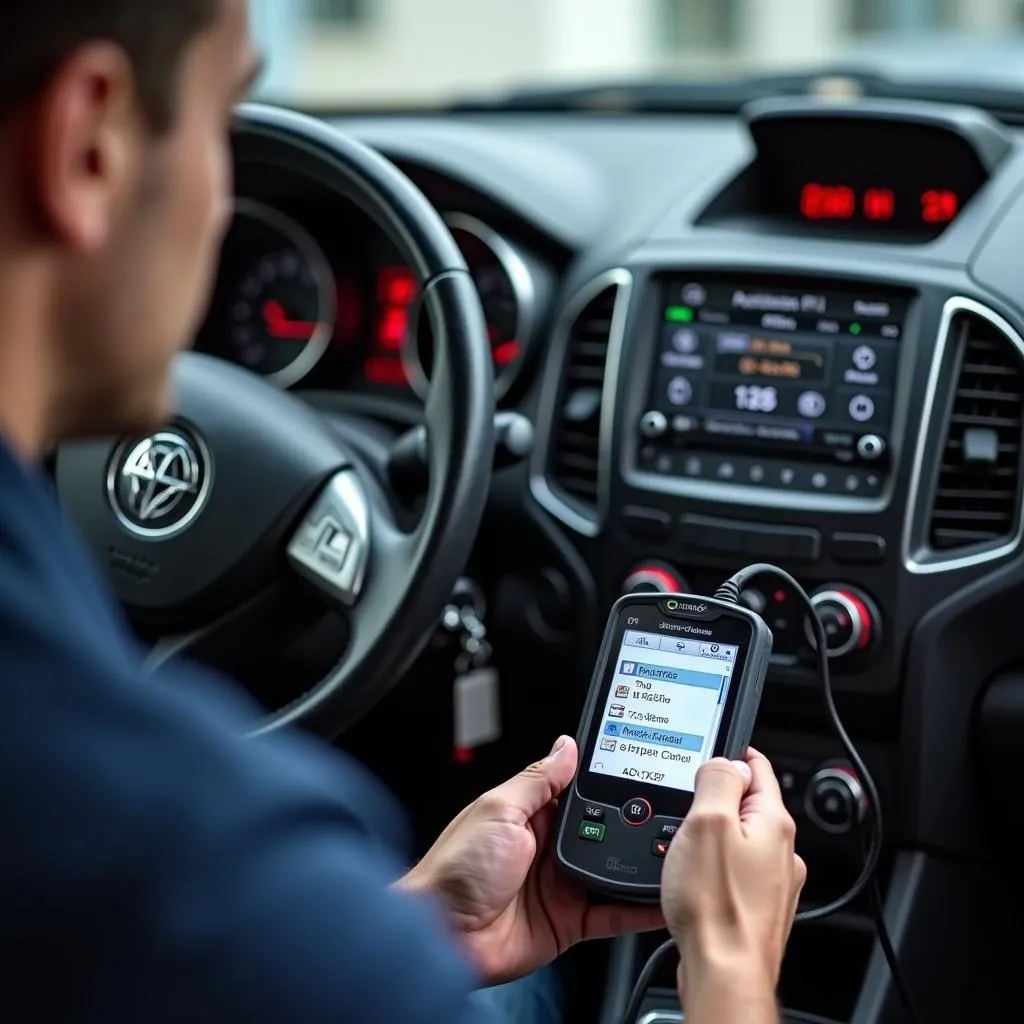 Mechanic using OBD2 Scan tool
Mechanic using OBD2 Scan tool
Conclusion
OBD scan tools have revolutionized car maintenance, providing a gateway to understanding and managing your vehicle’s health. From basic code readers to advanced professional-grade scanners, the right tool empowers you to diagnose issues, save money, and enjoy peace of mind on the road.
Need help setting up your diagnostic tools or have questions about your car’s performance? Don’t hesitate to contact our team of automotive experts via Whatsapp at +84767531508 for 24/7 support. We’re here to help you keep your car running smoothly!
